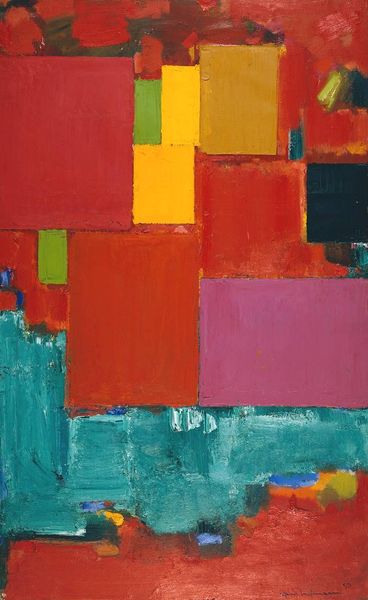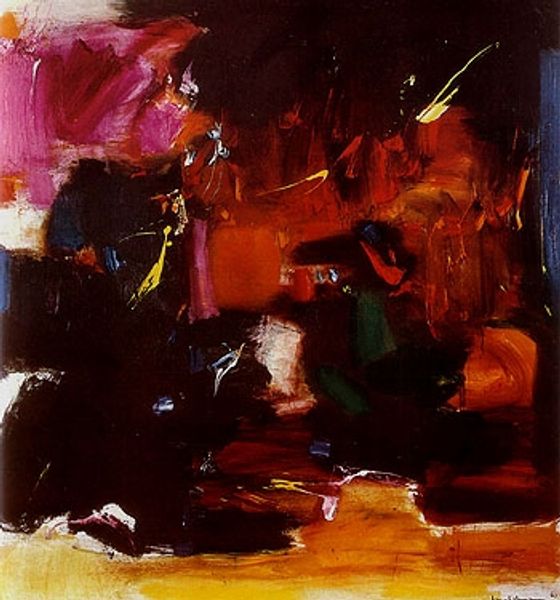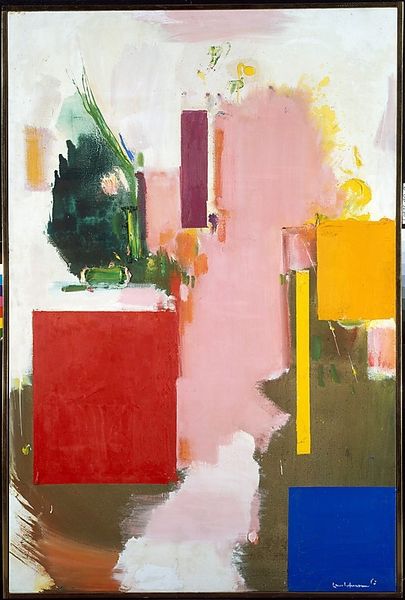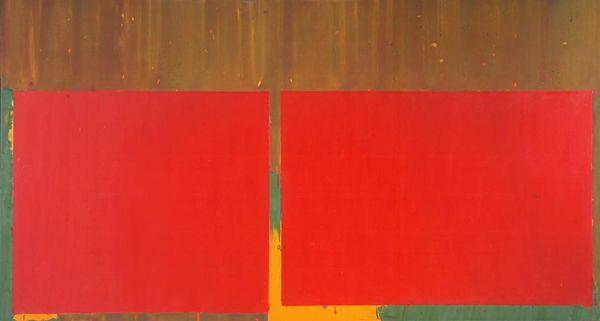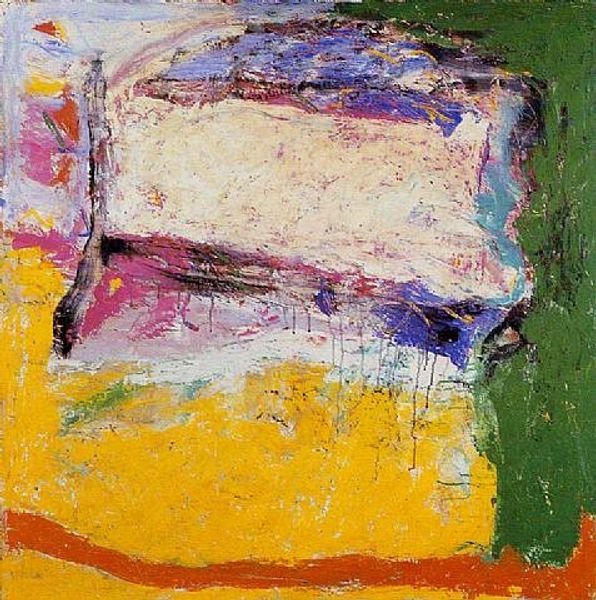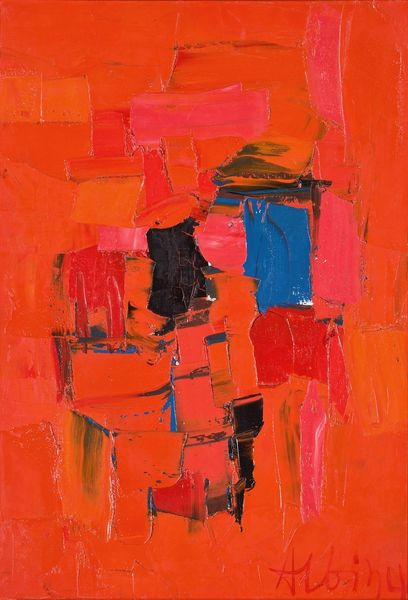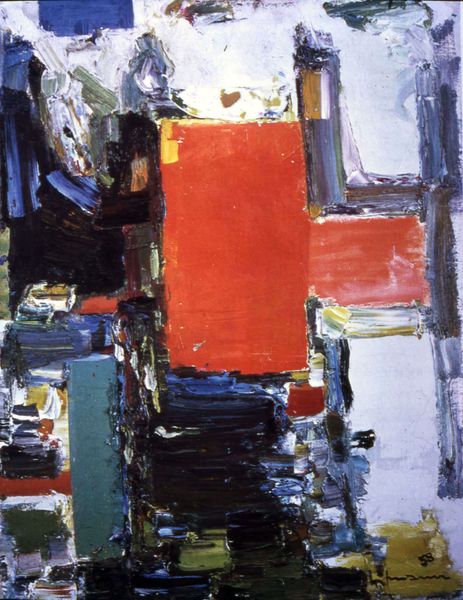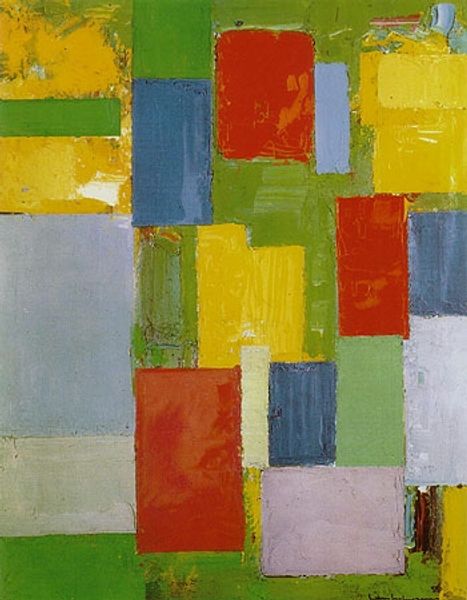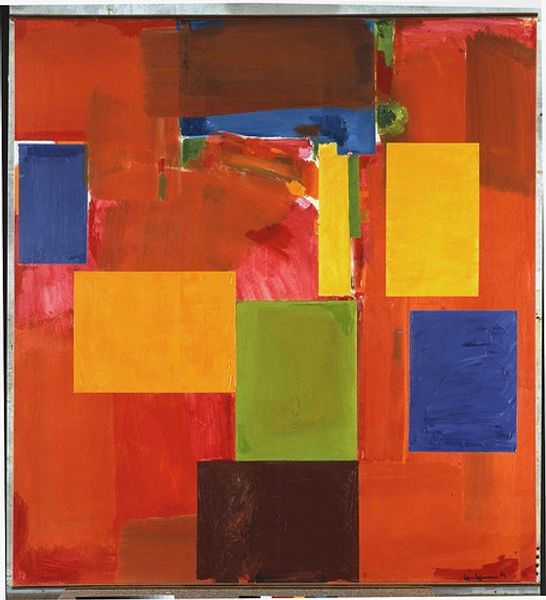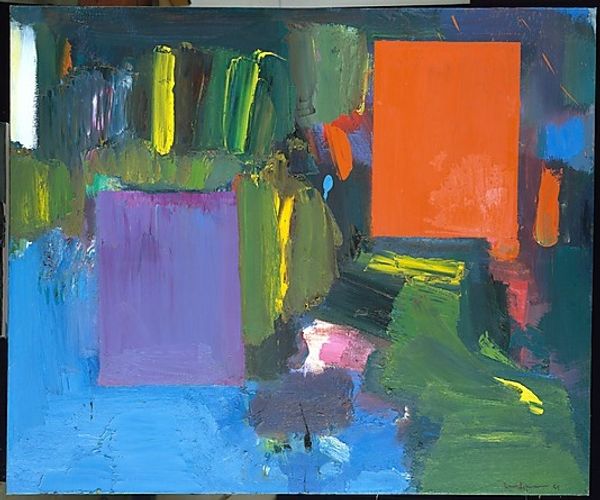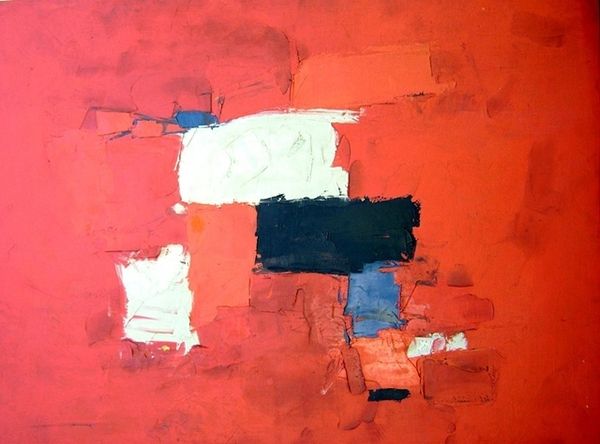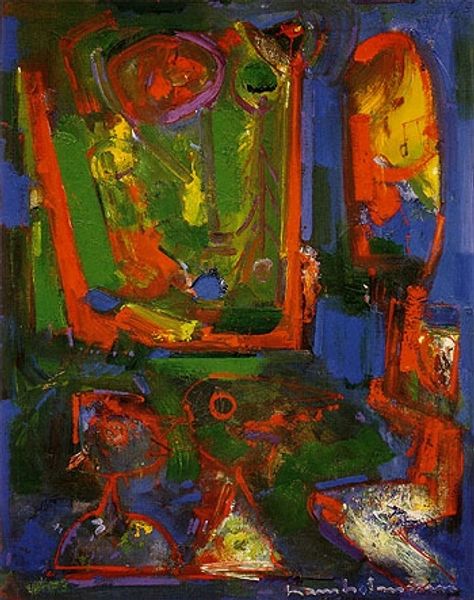
Copyright: Hans Hofmann,Fair Use
Editor: This is Hans Hofmann’s "Olive Grove," painted in 1960. It looks like he’s used acrylic paint and maybe other media. The colors are incredibly vibrant, but the composition feels a bit disjointed. I’m not sure I understand it. What do you see in this piece? Curator: Well, at first glance, we see a symphony of colours, seemingly clashing but ultimately harmonizing. What stands out to me are the rectangles. Have you considered their symbolic presence within the grove? Editor: Symbolism? I just saw them as, well, rectangles. Curator: Think about the rectangle as an enduring, primal form, seen in windows, doors, and even ancient standing stones. Hofmann is not just representing an olive grove, but evoking a sense of place that resonates deeply within our collective memory. The colours then serve as emotional cues – the verdant greens, perhaps a yearning for nature, juxtaposed with the bold artificiality of the orange rectangle, almost like a man-made intrusion. Editor: That’s fascinating. I didn’t think of the colours in that way – like a conversation between nature and something else, something more artificial. Is he saying something specific about our relationship with nature? Curator: Perhaps. Or perhaps it’s less didactic. More a rumination on how we perceive, remember, and interact with landscapes, mediated through the language of abstraction. Think of fauvism. He evokes the boldness of those colours to show us how they make us *feel*. How does that perspective reshape your view? Editor: It definitely gives me a lot to think about. Seeing those geometric forms as part of a broader historical and psychological context... I’ll never look at rectangles the same way! Thanks for sharing your insights! Curator: And I hope my interpretation has inspired you to seek more from abstract works, and perhaps a fresh grove, rich with a historical dimension that’s waiting for discovery.
Comments
No comments
Be the first to comment and join the conversation on the ultimate creative platform.
